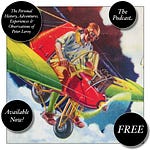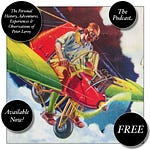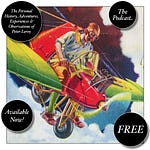What I recalled seeing was the painting that Andy had been working on for the last month or so, but the view I had gotten was much different from any I’d had before. Usually, scaffolding stood in front of the wall so that Andy could work on any part of the painting, and usually, the scaffolding prevented a viewer from seeing more than tiny, disconnected bits and pieces of the painting here and there, but the scaffolding was gone. There, on the wall, I had seen, instead of the single enormous canvas I had expected, a mosaic of smaller canvases. There must have been thirty of them, arranged on the wall so that they nearly touched and made one broad expanse. In the single moment of light Martha had allowed me, I had seen, painted across this map of canvas, stretched from one end to the other, two nude figures, the nearer one reclining, her head propped on her hand, and the one behind her leaning on her arm. They had been simplified into patterns of black and white, and rendered with broad swipes of the roller, but still they were obviously Margot and Martha.
“I’ve got it,” I said.
Headlights swung across the windows.
“And not a moment too soon,” said Margot.
“Up the stairs, Peter,” said Martha. “We’ll create a diversion.”
I ran for the stairs, but fast as I was I heard the front door open before I closed the door to the girls’ room.
“Don’t tell me you’re still up!” It was Rosetta’s voice.
“We were hungry,” said Margot.
“What are you eating?”
“Peanut butter and crackers. Want some?”
“Something else, I think. But I want you two to get back to bed.”
The adult voices moved toward the kitchen, and Margot and Martha came up the stairs, calling their good-nights as they came. They closed the door behind them, and we slipped into bed.
“What did you think?” asked Margot.
“It was amazing,” I said. “It’s you, isn’t it?”
“Both of us,” said Martha. “People think Our Father’s paintings are pure abstractions, but they’re not.”
“Oh?”
“No,” said Margot. “You see, he just can’t seem to shed the crutch of realism, so this is his way of hiding his dependence.”
“Wow.”
“She’s not making that up,” said Martha. “Our Father said it himself.”
“He’s his strongest critic,” said Margot.
“He said that, too,” said Martha.
“So what he does is put all those small canvases together on the wall that way and paint us,” said Margot.
“Do you pose for him?” I asked.
“No,” said Martha. “Well, sort of. He tells us how he wants us arranged, we take our positions, and he looks at us for a minute. That’s it. He does the painting from memory, so it’s more what he thinks we look like than what we really do.”
Margot said, “When he’s finished, he likes to have one look at the total effect, so the scaffolding comes down. That’s what you saw.”
“But no one will ever see us like that again,” said Martha, “because there’s only a little bit of me or Margot or both of us on each canvas, and the whole thing will be broken up.”
“People will buy them and take them away,” I said.
“Yes,” said Margot.
“But maybe someday, some collector will find out the secret and track down the paintings,” I suggested.
“Who would do that?” asked Martha.
“Oh, I don’t know. Somebody.”
“It doesn’t seem likely, does it?” said Margot.
“No,” I said. “Not likely. But possible.”
It was then, lying there with a secret in mind, knowing that I was where I shouldn’t be, that I had seen things I shouldn’t have seen, that I began to feel guilty. I had violated a trust, and I had stolen a secret. This feeling was oddly familiar, and with it came a memory, the memory of my first meeting with Andy, when I had climbed the ladder to the catwalk, feeling like Jack in “Jack and the Beanstalk.” Of course. That was the story we were in. It wasn’t “The Three Little Pigs.” It was “Jack and the Beanstalk.” I was playing the part of Jack. The part of the beanstalk was played by the rope ladder.
If I had been in a movie version of the tale, my lines, at that moment, lying in the Glynns’ bed, would have taken the form of an interior monologue, delivered in a voice-over: “Of course! Why haven’t I seen it before? It’s all so clear now. When I stand atop the Glynns’ garden wall, after scrambling up from the trash-can shed, while waiting for the girls to drop the ladder, am I not very much like Jack, up the beanstalk, at the threshold of the giant’s lair, a little boy climbing up into a forbidden place, where he is going to steal from the giant? What have I come to steal? Not his golden goose, and not his magic flute, and not his food—no, sirree. I’ve come to steal the sexual favors of his daughters and the secrets of his art.”
I have to admit that the guilt I felt was not strong enough to overwhelm the pleasure I felt. For one thing, I’d found my ideal role. Of all the characters I had played, Jack was the only one that was really right for me. It was about my speed. I was still very much a little boy, more suited to playing Jack, essentially a lucky bumbler, than to playing the part of Rocky or any of the other lead characters I saw on the screen at the Fine Arts Theater. They were strong and confident, born to do difficult things, to wrestle life to the ground, carry the day, and bring the whole thing off with panache and a winning grin. My part in life, I could see even then, would not be writ so large as theirs. I was unlikely ever to equal their strength, their confidence, or their panache, so it seemed to me best to practice the winning grin, and in the dark, I did.
[to be continued]
Have you missed an episode or two or several?
You can begin reading at the beginning or you can catch up by visiting the archive or consulting the index to the Topical Guide. The Substack serialization of Little Follies begins here; Herb ’n’ Lorna begins here; Reservations Recommended begins here; Where Do You Stop? begins here; What a Piece of Work I Am begins here; At Home with the Glynns begins here.
You can listen to the episodes on the Personal History podcast. Begin at the beginning or scroll through the episodes to find what you’ve missed. The Substack podcast reading of Little Follies begins here; Herb ’n’ Lorna begins here; Reservations Recommended begins here; Where Do You Stop? begins here; What a Piece of Work I Am begins here; At Home with the Glynns begins here.
You can listen to “My Mother Takes a Tumble” and “Do Clams Bite?” complete and uninterrupted as audiobooks through YouTube.
You can ensure that you never miss a future issue by getting a free subscription. (You can help support the work by choosing a paid subscription instead.)
At Apple Books you can download free eBooks of Little Follies, Herb ’n’ Lorna, Reservations Recommended, and Where Do You Stop? and What a Piece of Work I Am.
You’ll find overviews of the entire work in An Introduction to The Personal History, Adventures, Experiences & Observations of Peter Leroy (a pdf document), The Origin Story (here on substack), Between the Lines (a video, here on Substack), and at Encyclopedia.com.














Share this post